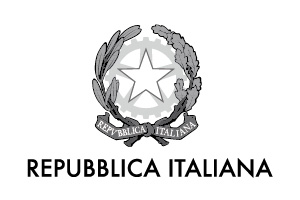e
Legend has it that when the necklace of the goddess Venus broke, 7 pearls fell into the Mediterranean Sea in front of the Tuscan archipelago, creating the islands of Giglio, Giannutri, Montecristo, Pianosa, Elba, Gorgona and Capraia which today enchant thousands of tourists. Not all of these islands are freely accesible, in particular Gorgona which is a prison and Montecristo, a National Park and so banned completely , Giannutri can be visited in part and then there is Pianosa which has a very special story.
And then there is Pianosa
The island used to be a famous penal colony in 1800, where prisoners worked the land and produced goods for export, including a very famous barley! At the time the island was flourishing and had an active community of prison guards who were living permanently there. After the colony was closed, a number of residents decided to stay. The island was still ideal as a prison complex both for its geographical shape and not being too far from the mainland. So it then became a political prison and later a prison for mafia criminals and used for the famous Article 41a for the isolation of Mafia bosses. This is why the local population was completely evacuated and instead hundreds of prison guards were settled there, at an unbearable cost to the Italian government, so that the project had to be abandoned and the island at that point remained almost uninhabited for decades. Slowly the island was reopened to tourists. Now former prisoners (trustees) are living there, running a restaurant and a bar, alongside employees of the Coast Guard, Forestry and public assistance. The island has been part of the Tuscan Archipelago National Park since 1998 and the Ministry of Environment has introduced strict rules for public access. The general use of the territory has been agreed between the Park and the Municipality of Campo in which the island belongs.
From Prison to the Tuscan Archipelago National Park
In summer you can hike over the land with licensed guides, but up to 2013, the waters around Pianosa were forbidden to all navigation and, of course, last but not least any activity in the sea. Then finally after negotiations lasting 10 years, the Tuscan Archipelago National Park opened an experiment on diving, by placing buoys dedicated to this and by regulating their use. Now you can visit the seabed accompanied by environmental guides diving in the Region of Tuscany and with dive centres and boats controlled by the requirements of the park (see http://www.islepark.it). Following the trail of thought that the natural environment must be protected as much as possible, but also be made accessible, the Pianosa buoys allow everyone to rediscover this part of the sea which had been closed to the public for so long.
The Sea as it was 100 years ago
What can be seen in these waters is the Mediterranean Sea as it was 100 years ago!
You are guaranteed a spectacle just with the impressive amount of fish, especially large schools of barracuda populate all its rocks, and wrap themselves around the groups of divers swimming amongst them, then there are groupers, some of considerable size, which gradually become accustomed to presence of divers and show themselves in all their splendour posing as models in front of the camera lenses.
Snapper and tuna complement the variety of fish present, but we can’t mention these unusual encounters, without remembering that we are in a almost untouched sea , so it’s not uncommon to come across lobsters of all sizes, sunfish, and sea eagles. All this is Pianosa, or at least what we’ve already seen of the seabed never ceases to surprise us. In 2015, the Park confirmed reopening the diving project from April until November. Come and discover this unspoilt underwater treasure.
For more information on diving in Pianosa visit www.divinginelba.com where you’ll find photos and video to get a small preview of what to expect underwater.
Riccardo Buralli
Diving in Elba




